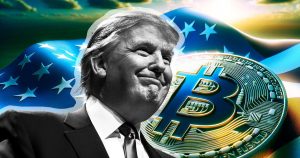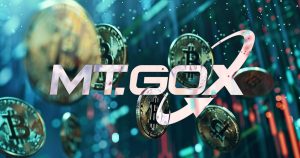Chainlink Exec Reveals Leading Banks’ Move Towards Tokenizing Real World Assets

The Dawn of a New Financial Era
Understanding Tokenization
At its core, tokenization refers to the process of converting rights to an asset into a digital token on a blockchain. This innovative approach offers a myriad of benefits, including increased liquidity, improved efficiency in asset transfer, and enhanced security.
Why Banks Are Embracing Tokenization
Leading banks are increasingly gravitating towards tokenization for several compelling reasons. The allure of streamlining operations, reducing costs, and unlocking new revenue streams has proven irresistible. Moreover, tokenization paves the way for fractional ownership, broadening access to assets previously out of reach for the average investor.
The Chainlink Perspective
Chainlink’s Role in Tokenization
Chainlink, a decentralized oracle network, plays a pivotal role in this ecosystem by securely connecting smart contracts with off-chain data and services. Its involvement is crucial for validating and ensuring the integrity of the real-world assets being tokenized.
Insights from the Chainlink Executive
A Chainlink executive has shed light on the burgeoning interest among top banks in leveraging blockchain technology for asset tokenization. This move is seen as a strategic step to capitalize on the benefits blockchain offers, signifying a major endorsement of the technology’s potential.
The Implications of Tokenizing Real World Assets
For Investors
Tokenization opens up new avenues for investment, allowing individuals to acquire fractional shares in assets like real estate, art, and commodities. This democratization of investment could significantly alter the investment landscape, making it more inclusive and diverse.
For the Financial Industry
The financial sector stands on the brink of a revolution, with tokenization offering a way to streamline processes, enhance security, and improve transparency. However, it also poses regulatory challenges and necessitates robust frameworks to mitigate risks associated with digital assets.
Global Economic Impact
The ripple effects of this shift could extend far beyond the financial industry, potentially boosting economic growth by making assets more liquid and accessible. It also raises important questions about privacy, security, and the role of traditional financial intermediaries.
Challenges and Considerations
Regulatory Hurdles
Navigating the complex web of global financial regulations is a formidable challenge for banks embarking on the tokenization journey. Ensuring compliance without stifling innovation is a delicate balance that must be struck.
Technical Barriers
The technical intricacies of blockchain technology and the need for interoperability between different platforms pose significant challenges. Overcoming these requires concerted efforts and collaboration across the industry.
Security Concerns
While blockchain is renowned for its security features, the tokenization of assets introduces new vulnerabilities. Safeguarding against these risks is paramount to maintaining trust in the system.
Looking Ahead: The Future of Tokenized Assets
The tokenization of real world assets is not merely a fleeting trend but a harbinger of a profound transformation in the financial sector. As technology evolves and regulatory frameworks mature, we can expect to see an acceleration in the adoption of this innovative approach.
The Potential for Innovation
The possibilities are boundless, with tokenization serving as a catalyst for new financial products and services that could reshape the investment landscape.
The Role of Collaboration
Achieving the full potential of tokenization requires collaboration between banks, technology providers, regulators, and other stakeholders. It’s a journey that necessitates shared vision and collective effort.
Conclusion
The move by leading banks towards tokenizing real world assets, as revealed by a Chainlink executive, marks a pivotal moment in the financial sector’s evolution. This shift promises to democratize investment, enhance efficiency, and foster innovation, albeit not without its challenges. As we navigate this new terrain, the collaboration, ingenuity, and commitment of all stakeholders will be crucial to unlocking the transformative potential of tokenization.
FAQs
- What is tokenization? Tokenization is the process of converting rights to an asset into a digital token on a blockchain, facilitating improved liquidity, security, and efficiency.
- Why are leading banks interested in tokenization? Banks are drawn to tokenization for its potential to streamline operations, reduce costs, unlock new revenue streams, and enable fractional ownership.
- What role does Chainlink play in tokenization? Chainlink ensures the secure and reliable integration of real-world data with smart contracts on the blockchain, crucial for the tokenization process.
- What are the challenges associated with tokenizing assets? The main challenges include navigating regulatory frameworks, overcoming technical barriers, and addressing security concerns.
- How could tokenization impact the financial industry and investors? Tokenization could revolutionize the financial industry by making investment more accessible and diverse, streamlining operations, and introducing new revenue models.





